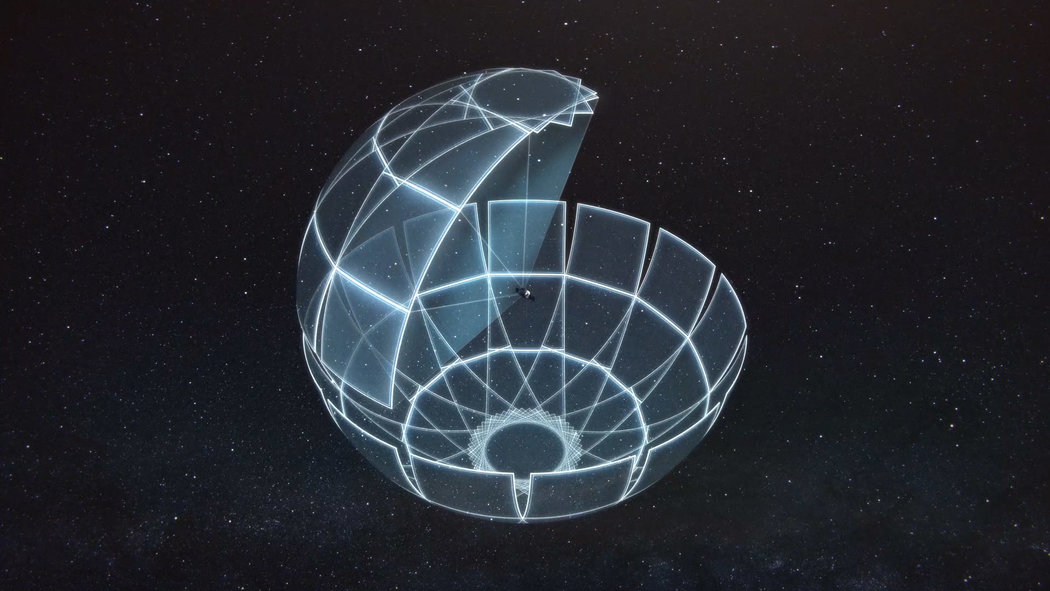Unveiling the Cosmic Marvel: TESS Unearths Its Maiden Earth-Sized World

In the vast expanse of the cosmos, where stars dance in a celestial ballet and planets waltz in their orbits, With the precision of a cosmic architect, NASA’s Transiting Exoplanet Survey Satellite (TESS) has unveiled this cosmic gem, nestled within the tapestry of the night sky a groundbreaking discovery has stirred the hearts of astronomers and dreamers alike: the revelation of TESS’s inaugural Earth-sized planet.
Picture a realm akin to our own blue marble, suspended in the cosmic ballet, yet distant and mysterious in its allure..
Like a sleuth in the darkness, TESS has sifted through the star-studded canvas, meticulously cataloging celestial bodies and unlocking the secrets of distant worlds.
And now, it has gifted us with a glimpse into the possibility of a planet that mirrors our own terrestrial abode.
Imagine standing on the precipice of discovery, gazing out into the abyss of space, and knowing that somewhere beyond the shimmering stars lies a world that echoes the familiar contours of home.
It’s a revelation that ignites the imagination and beckons us to ponder the mysteries of the universe with a newfound sense of wonder and awe.
As we embark on this cosmic odyssey, let us embrace the journey of exploration and discovery, fueled by the insatiable curiosity that drives humanity to reach for the stars.
Join us as we delve into the depths of space, where every discovery brings us one step closer to unraveling the enigma of our place in the cosmos. Orbiting a nearby star, the new planet is the smallest identified so far by the TESS mission
Overview of the earth-sized world
The new Earth-sized planet is likely a rocky though uninhabitable world, as it circles its star in just 7.8 days — a relatively tight orbit that would generate surface temperatures on the planet of up to 800 degrees Fahrenheit.
The discovery of this Earth-sized world is nevertheless exciting, as it demonstrates TESS’ ability to pick out small planets around nearby stars
TESS has been hunting for planets beyond our solar system since it launched on April 18, 2018. The satellite is a NASA Astrophysics Explorer mission that is led and operated by MIT and is designed to observe nearly the entire sky, in overlapping, month-long patches, or “sectors,” as it orbits the Earth
The Transiting Exoplanet Survey Satellite (TESS) stands as a beacon of exploration in the vast expanse of our universe.
Launched by NASA in April 2018, TESS embarks on a mission of profound significance: to uncover the mysteries of distant worlds orbiting bright stars.
Among its remarkable achievements is the recent revelation of an Earth-sized exoplanet, marking a pivotal moment in the annals of space exploration.
TESS Mission
At the heart of TESS lies a noble purpose: to identify and characterize exoplanets using the transit method.
This technique involves detecting the subtle dimming of a star’s light as an orbiting planet passes in front of it.
By scrutinizing such transits, TESS unveils the presence of exoplanets, offering a tantalizing glimpse into the cosmic tapestry.
Envisioned as a precursor to future observatories, such as the James Webb Space Telescope, TESS serves as a celestial scout, providing a treasure trove of targets for in-depth analysis and study.
The technical prowess of TESS is awe-inspiring. Orbiting in a highly elliptical path, it surveys vast swathes of the celestial sphere with its suite of sophisticated instruments.
Its observation strategy is meticulously crafted, optimizing the chances of detecting distant worlds amidst the sea of stars.
The Search for Exoplanets
The quest for exoplanets is a saga spanning decades, punctuated by groundbreaking discoveries and technological advancements.
From the seminal detection of 51 Pegasi b to the present day, the history of exoplanet exploration is a testament to human curiosity and ingenuity.
An array of ingenious methods has been deployed in the pursuit of exoplanets. From the transit method utilized by TESS to the radial velocity method, gravitational microlensing, and direct imaging, each technique offers a unique window into the cosmos, enriching our understanding of planetary systems.
TESS: A Game-Changer in Exoplanet Hunting
TESS represents a quantum leap forward in the realm of exoplanet hunting. Unlike its predecessors, TESS boasts a wide-field survey capability, enabling it to scan almost the entire celestial sphere with unparalleled precision.
By focusing on bright stars, TESS maximizes the potential for follow-up observations, unraveling the mysteries of distant worlds with unprecedented clarity.
Moreover, TESS possesses unique capabilities that set it apart in the cosmic arena. Its ability to detect smaller exoplanets, particularly around M-dwarf stars, opens new vistas of exploration.
Furthermore, TESS identifies planetary systems ripe for detailed atmospheric studies, shedding light on the conditions prevailing on distant worlds.
TESS’s First Earth-Sized Exoplanet
In a momentous revelation, TESS has unveiled its maiden Earth-sized exoplanet, ushering in a new era of discovery.
Designated with reverence, this celestial body captivates the imagination with its enigmatic allure. Its discovery reverberates across the scientific community and resonates with the wider public, igniting a sense of wonder and awe.
The significance of this discovery cannot be overstated. By identifying an Earth-sized exoplanet, TESS offers a tantalizing glimpse into the prevalence of terrestrial worlds in our galaxy.
This momentous achievement underscores the transformative impact of space exploration on our understanding of the cosmos.
Characteristics of the Exoplanet
As we delve deeper into the enigmatic realm of this newfound world, we uncover a trove of intriguing characteristics.
From its composition and structure to its orbit and proximity to its host star, each facet offers valuable insights into the nature of this distant realm.
Through meticulous analysis, scientists decipher the composition of the exoplanet, drawing inferences from its density and orbital parameters.
Furthermore, the orbit of the exoplanet around its host star offers clues to its habitability, providing tantalizing hints of its potential as a cradle for life.
Implications for the Search for Life
The quest for life beyond our solar system has long captivated the imagination of scientists and enthusiasts alike.
With the discovery of this Earth-sized exoplanet, the search takes on a renewed sense of urgency and purpose.
As we contemplate the habitability criteria for life as we know it, the discovery of this exoplanet offers tantalizing possibilities.
From its temperature and presence of water to the stability of its atmosphere, each factor contributes to the tantalizing prospect of life beyond Earth.
Future Prospects for TESS
Looking to the horizon, we glimpse a future brimming with promise and potential. TESS’s ongoing mission objectives promise to unveil a treasure trove of exoplanets, enriching our understanding of the cosmos.
With each discovery, we inch closer to the elusive goal of finding Earth-like worlds teeming with life.
As we anticipate future discoveries, the prospect of finding more Earth-sized exoplanets and potentially habitable worlds fills us with excitement and anticipation.
With TESS at the vanguard of exploration, the universe beckons with untold wonders waiting to be discovered.
Comparative Planetary Science
In our quest to understand the cosmos, we draw parallels between the newfound exoplanet and our own celestial abode.
By contrasting its characteristics with those of Earth, we gain valuable insights into the processes shaping planetary formation and evolution.
From similarities in size and composition to differences in atmospheric makeup, each comparison enriches our understanding of the cosmic tapestry.
As we unravel the mysteries of planetary science, we uncover the threads that bind us to the wider universe.
TESS’s Impact on Astrophysics
The impact of TESS extends far beyond the realm of exoplanet discovery, resonating deeply with the broader field of astrophysics.
Through its groundbreaking discoveries, TESS enriches our understanding of planetary systems and their diversity, offering valuable insights into the cosmic tapestry.
Moreover, TESS’s contributions reverberate across a myriad of disciplines, from stellar astronomy to planetary science.
By pushing the boundaries of exploration, TESS inspires a new generation of scientists and enthusiasts to gaze skyward with wonder and curiosity.
Challenges in Exoplanet Detection
Yet, amidst the triumphs of discovery lie formidable challenges that must be overcome. From the limitations of current detection methods to the complexities of observational biases, the quest for exoplanets is fraught with hurdles.
However, with each challenge comes the opportunity for innovation and progress. As we look to the future, the promise of new technologies and missions holds the key to unlocking the secrets of the cosmos, propelling us ever closer to the stars.
TESS and the Search for Extraterrestrial Intelligence (SETI)
In our search for cosmic companionship, TESS assumes a pivotal role in the quest for extraterrestrial intelligence.
By scrutinizing anomalies in light curves, TESS offers tantalizing clues to the presence of technologically advanced civilizations beyond our solar system.
As we contemplate the vastness of space and the myriad worlds it harbors, the prospect of encountering intelligent life beckons with tantalizing possibility.
With TESS at the forefront of exploration, the search for extraterrestrial intelligence enters a new era of discovery and wonder.
Public Interest and Outreach
In the age of social media and digital connectivity, the discoveries of TESS captivate the hearts and minds of the public.
From media coverage to social media reactions, each discovery sparks a wave of excitement and intrigue, resonating with audiences around the globe.
Moreover, TESS’s discoveries offer a wealth of educational opportunities and resources for enthusiasts and scholars alike.
From outreach programs to educational websites and citizen science projects, TESS inspires a new generation to explore the wonders of the cosmos.
Conclusion
As we reflect on the journey of discovery embarked upon by TESS, we are filled with a sense of wonder and awe.
From its humble beginnings to its monumental achievements, TESS stands as a testament to human curiosity and ingenuity.
Looking ahead, the future of exoplanet research brims with promise and potential. With TESS at the vanguard of exploration, the cosmos beckons with untold wonders waiting to be discovered.
As we gaze skyward with wonder and curiosity, we are reminded of the boundless potential of human exploration and discovery.









